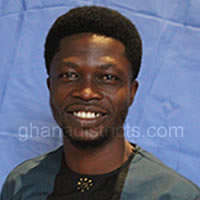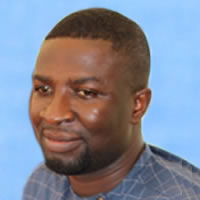The Ghana Education Service has oversight responsibility over the day to day administration of education in the district. The District Assembly however, plays a facilitative role through the provision of certain basic infrastructure and the creation of enabling environment for the progress of education in the district.
Type of Educational Facilities in the District
The socio-economic development of any district is largely depended on the quality of its educational delivery. This is inherent in the quality and adequacy of educational facilities and infrastructure within the district. In all the district has 55 Kindergarten, 55 Primary Schools, 45 Junior High Schools, 4 Senior High Schools, 1 Vocational/Technical School, 2 tertiary 6 ICT Centres and 3 Libraries..
A survey conducted in 2014 in the district revealed that some of the basic schools have educational facilities such as classrooms, urinals and toilet facilities. However ancilliary facilities such as computer laboratories, water tanks, football pitches, furniture, kitchen, staff common rooms and new classroom blocks need to be provided to create conducive atmosphere for teaching and learning.
The survey also revealed that Amadu, Akaka, Soboyo and Mobia communities in the Temate Electoral Area ought to be provided with basic school facilities to spare the pupils from travelling as far as Temate/Nkwanta to access education. This has however resulted in the increased enrolment in the A.M.E Zion Educational Complex in Nkwanta.
The Assembly should however make plans of increasing and improving the educational facilities in the District to hold the growing population of the school-going age. The siting of educational facilities should also be considered in order to provide for communities/settlements which lack these facilities. Table 1.47 Provides analysis of the types of educational facilities in the district.
School Enrolment
Basic School Enrolment
The total enrolment in basic schools in the district for the 2013/2014 academic year is 17,823 of which 9,362 corresponding to 53.0 percent are boys and 8,461 representing 47.0 percent are girls. Out of the total basic school enrolment of 17,823, 4,323 which represent 24.0 percent are in the pre-school (KG). This is made up of 51.0 percent (2,196) boys and 49.0 percent (2,127) girls. Also 9,807 (55.0%) pupils constituting 53.0 percent of boys (5,170) and 47.0 percent of girls (4,637) are in the Primary School. Thus, the total enrolment in the Junior High School is 3,693 (21.0%) comprising of 1,996 (54.0%) boys and 1,697 (46.0%) girls.
It could be observed from above that girls’ enrolment in all levels of basic education is generally lower than the boys’ enrolment. Regardless of the gap between boys and girls enrolment in basic schools in the district is very narrow which explains that girls’ participation in basic schools in the district is encouraging.
Table 2.30 and figure 1.16 below provide more detailed analysis on basic school enrolment in the district for both private and public basic schools.
The total enrolment in Senior High School and Vocational/Technical School in the district as at 2013/2014 academic year is 4,775 constituting of 57 percent (2,736) males and 43 percent (2,039) females. Out of this number, 4,738 (99%) comprising of 57 percent (2,701) males and 56.7 percent (2,037) females are in the Senior High School. The remaining 37 (1.0%) consisting of 96 percent (35) males and 4.0 percent (2) females are in the Technical/Vocational School.
It is clear from this analysis that the boys-girls enrolment in the basic schools follows the same trend in boys-females’ enrolment in Senior High School in the district. The data also indicates that parents are gradually accepting the need to educate their girl child which is a great potential for the district in addressing the issue of gender inequality and ensuring full participation of both sexes in active decision making for sustainable development.
Table 2.31 and Figure 1.17 present analysis of Senior High School and Technical/Vocational School in the both public and private institutions in the district.
Number of Teachers
Data gathered revealed that the district has a total number of 1,324 teachers. In effect, the teacher-pupils’ ratio in the district is 1:16 and the teacher-students ratio is 1:18 which show that teachers are more than available in the district. There is an issue however, to do with the geographical distribution of teachers in the district in that greater percentages of these teachers are located in the Southern part of the district to the neglect of the Northern part. There is the need to put in place certain conscious mechanisms in the form of incentives such as allowances and accommodations among others to attract teachers to these deprived areas.
Of the total number of teachers 60.0 percent corresponding to 792 teachers are trained whilst the remaining 40.0 percent corresponding to 532 teachers are untrained. In general, it could be concluded that the district has more trained teachers than untrained teachers and for that matter the issue of trained teachers should be taken on a lighter weight.
However, further analysis indicates that trained teachers in the district are skewed in terms of the level of school (i.e. Pre-School, Primary, JHS or SHS), type of school (i.e. Secondary or Vocational/Technical), type of institution or ownership (i.e. private or public) and geographical distribution or location (i.e. Southern or Northern part). With respect to the level of school the JHS has the highest proportion of trained teachers of 253 followed by primary with 239 teachers. Thus, the vocational level has the lowest number of trained teachers of 6 teachers.
It is also obvious from the analysis that whereas the public institution (school) has 68.0 percent trained teachers the private sector has only 16.0 percent trained teachers. This situation calls for immediate intervention from the government. This could be in the form of intensive training workshop to abreast these untrained teachers with the vital professional and pedagogical skills required to promote quality teaching and effective learning.
Table 2.33 provide detailed analysis of the teacher situation in the district.
Classroom blocks
The district has 80 No 3 unit, 263 No 6 unit and 124 No 3 unit classroom blocks for public K.G. Primary and Junior High Schools respectively as shown in table 1.51 below. Comparing these figures to the number of public K.G. Primary and Junior High schools in the district (i.e. 55, 55 and 45 respectively) it is apparent that these classroom blocks are woefully inadequate. Notwithstanding this, most of these classrooms especially in the Northern part are dilapidated and in very poor conditions. There is the need to provide additional stock of classroom blocks and rehabilitate existing ones that are in very poor conditions.
2.20.6 Circuits in the District
There are 5 circuits in the district. Table 2.35 below gives names of circuits in the district and the number of schools under each circuit.
It could be observed from the above table that there are seven (7) and five (5) Junior High School in the Banko and Besoro Circuits respectively. It is therefore possible that these Junior High Schools in these circuits cannot contain the enrolments levels of pupils from the primary schools. To curb this situation more JHS should be provided in these areas. It is also highly recommended that most of the schools should be considered for the School Feeding Programme to boost the enrolment level in these deprived areas.
Furniture Situation in the District
The total number of furniture in the district does not commensurate with the number of enrolment in the various schools. There is the need to provide additional furniture stock. Table 1.53 shows the furniture situation in the district on circuit basis.
School Feeding Programme & Capitation Grant
The Sekyere Kumawu District school feeding programme cover fifteen schools. These schools are;
1.Kumawu Anglican primary
2.Kumawu Benevolent Islamic Basic
3.Kumawu R/C primary
4.Kumawu presby primary
5.Woraso D/A primary
6.Bodomase Methodist Ka/primary
7.Woraso D/A kG/primary
8.Woraso presby kG/primary
9.Sekyere D/A Saviour kg/primary
10.Banko D/A KA/Primary
11.Besoro D/A primary
12.Oyoko D/A primary
13.Nkwanta A.M.E. Zion primary
14.Sekyere D/A Basic school
15.Bodomase D/A Primary
Problems and Challenges of Education
• Some of the classroom blocks are dilapidated and in need of urgent maintenance
• Large number of unqualified Teachers
• Unpaid salaries
• Inadequate office equipment
Date Created : 11/28/2017 4:12:30 AM





 facebook
facebook twitter
twitter Youtube
Youtube TOLL FREE 0800 430 430
TOLL FREE 0800 430 430 +233 593 831 280
+233 593 831 280 GPS: GE-231-4383
GPS: GE-231-4383 info@ghanadistricts.com
info@ghanadistricts.com Box GP1044, Accra, Ghana
Box GP1044, Accra, Ghana